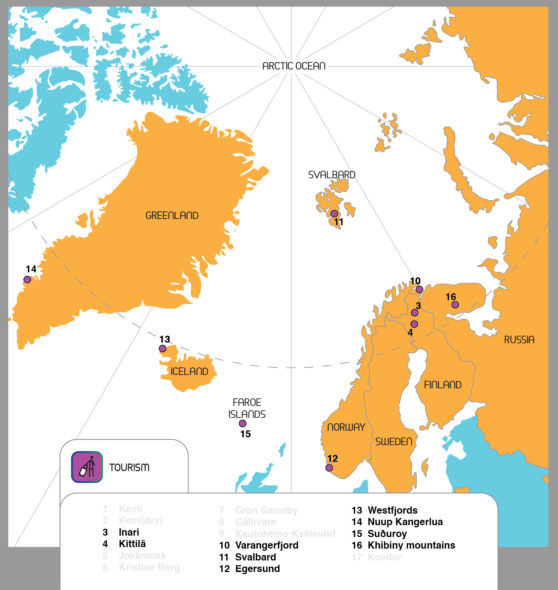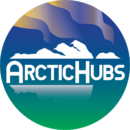![]() Tourism has emerged as one of the most rapidly growing sectors in the Arctic region and one towards which many hubs are turning.
Tourism has emerged as one of the most rapidly growing sectors in the Arctic region and one towards which many hubs are turning.
For a great number of tourists and global tourism companies alike, the Arctic has evoked images of unspoilt wild landscapes, extreme climate and an ideal place to escape the pressures of everyday life!
Often stimulated by news of retreating ice caps and diminishing populations of polar bear, there is also a strong perspective, generated externally, of the Arctic as somewhere to visit soon before it changes beyond recognition or disappears altogether.
That vision, however, only tells a fraction of the story as to how tourism is being produced and experienced in diverse ways across the Arctic. More than an industry or just an economic activity.
Arctic tourism hubs are showing how important environmental and socio-culture considerations have to be blended together to generate sustainable benefits.
Where are the tourism hubs located?
Nine different tourism hubs have been selected by the ArcticHubs project for closer research and analysis, in order to tease out appropriate solutions in diverse settings.

Greenland (Nuup Kangerlua #14); Iceland (Westfjords #13); Faroe Islands (Suðuroy #15); Norway (Varangerfjord #10, Svalbard #11, Egersund #12); Finland (Inari #3, Kittilä #4); Russia (Khibiny mountains #16)
These nine sites represent both long established destinations, along with many newcomer tourism hotspots. A number of hubs have become port calls for adventure cruise ships in locations such as Svalbard, Iceland and Greenland, which until Covid-19 in 2020 had become a rapid growth area for the sector.
What research questions?
Our research questions aim to open out the simplified marketing vision of tourism in the Arctic which obscures a whole suite of further issues. Prominent amongst these, the ArcticHubs researchers will be looking for solutions regarding the following points:
- Training and education – that allows responses to emerging job opportunities with the appropriate local skills services.
- SMEs and local entrepreneurship – focusing on smaller local business and how they can thrive alongside the stronger influence of external global players.
- Destination management models – developed alongside other land-uses, with both local and global stakeholders.
- Consideration for and input from indigenous and other local knowledges or aspects of heritage.
From Greenland in the West, to Russia in the East, tourism hubs will explore sustainable practice whilst ‘Unpacking the Arctic’.
